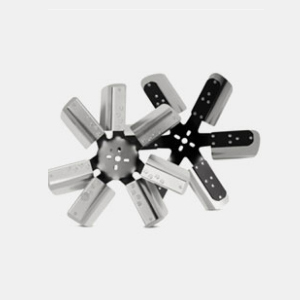-
 Afrikaans
Afrikaans -
 Albanian
Albanian -
 Amharic
Amharic -
 Arabic
Arabic -
 Armenian
Armenian -
 Azerbaijani
Azerbaijani -
 Basque
Basque -
 Belarusian
Belarusian -
 Bengali
Bengali -
 Bosnian
Bosnian -
 Bulgarian
Bulgarian -
 Catalan
Catalan -
 Cebuano
Cebuano -
 China
China -
 Corsican
Corsican -
 Croatian
Croatian -
 Czech
Czech -
 Danish
Danish -
 Dutch
Dutch -
 English
English -
 Esperanto
Esperanto -
 Estonian
Estonian -
 Finnish
Finnish -
 French
French -
 Frisian
Frisian -
 Galician
Galician -
 Georgian
Georgian -
 German
German -
 Greek
Greek -
 Gujarati
Gujarati -
 Haitian Creole
Haitian Creole -
 hausa
hausa -
 hawaiian
hawaiian -
 Hebrew
Hebrew -
 Hindi
Hindi -
 Miao
Miao -
 Hungarian
Hungarian -
 Icelandic
Icelandic -
 igbo
igbo -
 Indonesian
Indonesian -
 irish
irish -
 Italian
Italian -
 Japanese
Japanese -
 Javanese
Javanese -
 Kannada
Kannada -
 kazakh
kazakh -
 Khmer
Khmer -
 Rwandese
Rwandese -
 Korean
Korean -
 Kurdish
Kurdish -
 Kyrgyz
Kyrgyz -
 Lao
Lao -
 Latin
Latin -
 Latvian
Latvian -
 Lithuanian
Lithuanian -
 Luxembourgish
Luxembourgish -
 Macedonian
Macedonian -
 Malgashi
Malgashi -
 Malay
Malay -
 Malayalam
Malayalam -
 Maltese
Maltese -
 Maori
Maori -
 Marathi
Marathi -
 Mongolian
Mongolian -
 Myanmar
Myanmar -
 Nepali
Nepali -
 Norwegian
Norwegian -
 Norwegian
Norwegian -
 Occitan
Occitan -
 Pashto
Pashto -
 Persian
Persian -
 Polish
Polish -
 Portuguese
Portuguese -
 Punjabi
Punjabi -
 Romanian
Romanian -
 Russian
Russian -
 Samoan
Samoan -
 Scottish Gaelic
Scottish Gaelic -
 Serbian
Serbian -
 Sesotho
Sesotho -
 Shona
Shona -
 Sindhi
Sindhi -
 Sinhala
Sinhala -
 Slovak
Slovak -
 Slovenian
Slovenian -
 Somali
Somali -
 Spanish
Spanish -
 Sundanese
Sundanese -
 Swahili
Swahili -
 Swedish
Swedish -
 Tagalog
Tagalog -
 Tajik
Tajik -
 Tamil
Tamil -
 Tatar
Tatar -
 Telugu
Telugu -
 Thai
Thai -
 Turkish
Turkish -
 Turkmen
Turkmen -
 Ukrainian
Ukrainian -
 Urdu
Urdu -
 Uighur
Uighur -
 Uzbek
Uzbek -
 Vietnamese
Vietnamese -
 Welsh
Welsh -
 Bantu
Bantu -
 Yiddish
Yiddish -
 Yoruba
Yoruba -
 Zulu
Zulu
Innovative Solutions for Agricultural Mesh Applications and Benefits in Modern Farming
Understanding Agricultural Mesh A Versatile Tool for Modern Farming
In recent years, the agricultural sector has witnessed a significant transformation, largely driven by innovation and technology. One such innovation that has gained popularity is agricultural mesh, a versatile tool that offers numerous benefits for modern farming practices. This blend of functionality and efficiency is changing the way farmers approach crop production, pest management, and resource conservation.
Agricultural mesh refers to a range of netting products made from various materials, used primarily in farming to protect crops from adverse environmental conditions, pests, and diseases. It comes in different forms, including insect nets, shade nets, and bird nets, each serving a unique purpose. The primary advantage of using agricultural mesh is that it creates a physical barrier, enhancing protection without the use of harmful chemicals or pesticides.
One of the most significant benefits of agricultural mesh is its role in pest management. Insect nets, for example, safeguard plants from a variety of pests such as aphids, whiteflies, and moths. By physically blocking these pests, farmers can reduce their dependency on chemical pesticides, leading to healthier crops and, ultimately, a more sustainable farming practice. With the increased focus on organic farming, agricultural mesh is gaining traction as an eco-friendly solution that aligns with sustainable agriculture principles.
In addition to pest control, agricultural mesh is also effective in providing shade and reducing heat stress for plants
. Shade nets are especially valuable in areas with intense sunlight, helping to maintain optimal growing conditions for sensitive crops like tomatoes and lettuce. By regulating temperature and light exposure, farmers can enhance crop quality and yield, ensuring a healthier harvest.agricultural mesh

Water conservation is another critical aspect of modern farming that agricultural mesh supports. By using mesh covers over crops, farmers can significantly reduce water evaporation, leading to more efficient water usage. In regions where water scarcity is a pressing concern, this feature is invaluable. Moreover, certain types of agricultural mesh can help manage humidity levels, creating a more favorable microclimate for crops.
The economic benefits of using agricultural mesh are also noteworthy. Although the initial investment may seem high, the long-term savings realized through reduced pesticide use, improved yields, and water conservation can far outweigh the costs. Additionally, farmers employing agricultural mesh often experience increased crop resilience against diseases and environmental stressors, further enhancing their profitability.
Moreover, the versatility of agricultural mesh extends beyond crop production. It can be used in livestock farming as well, providing shelter and protection for animals against harsh weather conditions and predators. This aspect not only ensures animal welfare but can also contribute to higher productivity in livestock operations.
In conclusion, agricultural mesh is an invaluable tool for modern farmers, enhancing productivity while advocating for sustainable practices. Its numerous applications in pest control, water conservation, and climate management make it a critical component of contemporary agricultural strategies. As the world moves towards more sustainable practices, the adoption of agricultural mesh stands as a testament to the potential of innovative solutions in meeting the demands of a growing population while preserving our planet's resources. The future of farming may very well depend on such advancements, ensuring food security while fostering environmental stewardship.
-
Shipping Plastic Bags for Every NeedNewsJul.24,2025
-
Safety Netting: Your Shield in ConstructionNewsJul.24,2025
-
Plastic Mesh Netting for Everyday UseNewsJul.24,2025
-
Nylon Netting for Every UseNewsJul.24,2025
-
Mesh Breeder Box for Fish TanksNewsJul.24,2025
-
Expanded Steel Mesh Offers Durable VersatilityNewsJul.24,2025











